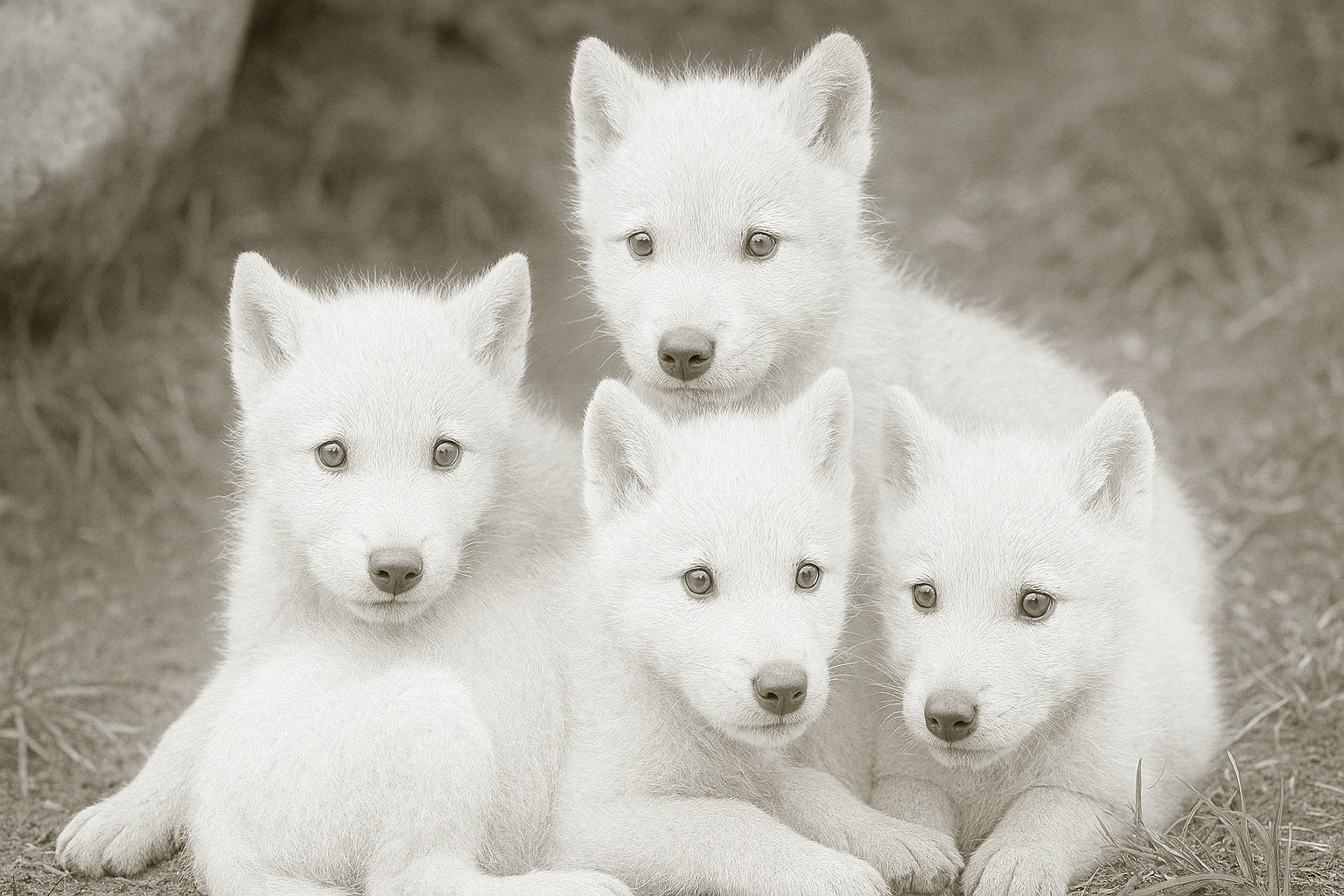A Prehistoric Miracle in Modern Times
In a discovery that sounds like something straight out of a fantasy novel or a Jurassic Park sequel, scientists and wildlife conservationists have announced an extraordinary breakthrough: the first dire wolf cubs have been born in over 12,000 years. These ancient predators, long thought to be extinct since the end of the last Ice Age, are now stepping their paws into a world they haven’t seen since mammoths roamed the Earth.
The news has sent shockwaves through the scientific community and has ignited the imaginations of animal lovers and history buffs across the globe. But how is this possible? Where did these dire wolves come from? And what does it mean for the future of wildlife conservation and de-extinction?
Let’s delve into this prehistoric marvel.
Who Were the Dire Wolves?
Dire wolves (Canis dirus) were one of the most formidable predators of the Pleistocene Epoch. Larger and more muscular than modern gray wolves, they roamed across North America and were known for their powerful jaws and hunting prowess. These wolves went extinct approximately 12,000 years ago, likely due to climate changes and the decline of large herbivorous prey.
Their legend, however, endured. From paleontology textbooks to pop culture phenomena like HBO’s Game of Thrones, where dire wolves were the sigil of House Stark, they have fascinated people for centuries.
The Resurrection: Science Behind the Revival
The birth of the first dire wolf cubs is not just a matter of miracle—it’s a blend of cutting-edge genetics, ancient DNA recovery, and relentless determination. Researchers from the Revive & Restore initiative partnered with leading geneticists and paleogenetic experts to make this happen.
Using well-preserved DNA extracted from dire wolf remains discovered in tar pits and permafrost, scientists sequenced the genome of the extinct species. The challenge was immense—dire wolves were genetically distinct from modern wolves, more closely related to jackals and African canids than to gray wolves. This meant that simple cloning wasn’t an option.
Instead, they used a technique known as CRISPR-Cas9 gene editing to modify the genome of a closely related canid, selectively reintroducing ancient dire wolf genes. After several attempts and ethical reviews, viable embryos were created and implanted into surrogate mothers. And finally, the world welcomed the first dire wolf cubs in over a dozen millennia.
The Birth: A Historic Moment
The first dire wolf cubs were born in a secure wildlife reserve in Montana. The event was monitored by veterinarians, geneticists, and conservationists. The cubs—three in total—are healthy, thriving, and already exhibiting behaviors distinct from modern canines.
They are stockier, have larger paws and skulls, and display an assertive, pack-oriented temperament even at an early age. These early indicators suggest a strong alignment with the physical and behavioral traits identified in dire wolf fossil records.
Their birth isn’t just a scientific milestone; it’s a poignant reminder of what we have lost and what we may yet recover.
What This Means for Conservation and Science
While the idea of bringing back extinct animals is controversial, it has undeniable implications for conservation biology. The resurrection of the first dire wolf cubs demonstrates what’s possible when ancient DNA, modern technology, and human ambition align.
This breakthrough can help:
- Rebalance ecosystems that once relied on apex predators like dire wolves.
- Advance our understanding of extinct species’ genetics and behavior.
- Develop new technologies for preserving endangered species.
However, it also raises ethical and ecological questions. Should we bring back species that nature phased out? Can we responsibly integrate them into today’s environment?
Public Reaction: Awe, Curiosity, and Caution
Social media has erupted with excitement. Videos of the newborn cubs have gone viral, and hashtags like #DireWolfCubs and #PrehistoricPups are trending. Enthusiasts and influencers are already flocking to Montana for a glimpse of these living fossils.
Yet, some ecologists and ethicists are urging caution. National Geographic experts emphasize the importance of long-term monitoring and responsible stewardship. Introducing apex predators into modern ecosystems, even in controlled reserves, carries risks that must be carefully managed.
Could Dire Wolves Roam the Earth Again?
It’s too early to tell whether dire wolves will ever roam wild again. For now, these cubs are part of a long-term study in a highly controlled environment. Researchers aim to learn everything they can from these animals before even considering reintroduction programs.
The cubs’ growth, dietary needs, social behavior, and ecological impact are being meticulously documented. If all goes well, future generations could see these once-extinct animals take up a role in conservation or controlled rewilding projects.
Fascinating Facts About Dire Wolves
- Dire wolves were about 25% heavier than gray wolves, weighing up to 150 pounds.
- Unlike gray wolves, their teeth were built to crush bone, much like hyenas.
- The La Brea Tar Pits in Los Angeles have yielded over 4,000 dire wolf fossils.
- Genetic studies show dire wolves split from modern wolves nearly 6 million years ago.
What Makes These Cubs So Unique?
The first dire wolf cubs represent a fusion of past and present. They are not clones, nor are they genetically modified dogs. Instead, they are a newly restored species, carefully crafted to match their long-lost ancestors.
They provide a unique opportunity to witness prehistoric life in a modern setting. It’s a glimpse into the ancient world, now alive again through the marvel of genetic science.
FAQs
Q: Are these cubs pure dire wolves?
A: Genetically, they are as close to pure as possible, using advanced gene editing and ancient DNA. They are not hybrids or mere approximations.
Q: Where can I see the first dire wolf cubs?
A: Currently, they are housed in a private, secure conservation facility in Montana. There are plans to create virtual tours and live streams for the public.
Q: What are the ethical concerns about reviving extinct species?
A: Critics argue it could divert resources from protecting endangered animals and disrupt current ecosystems. Proponents see it as a tool for repairing past human-caused extinctions.
Q: Could dire wolves pose a danger to humans or animals?
A: The cubs are being studied in a controlled setting. There are no immediate plans to release them into the wild until their behavior and ecological impact are fully understood.
Q: How is this different from cloning?
A: Cloning replicates an exact copy from living DNA. This project used ancient DNA and gene editing to reconstruct a species from extinction.
Final Thoughts: A Howl From the Past
The birth of the first dire wolf cubs is more than just a scientific curiosity—it’s a message from the past. It reminds us that extinction isn’t always final and that with care, courage, and innovation, we might restore what has been lost.
While challenges remain, this historic achievement lights a path forward, not just for dire wolves but for countless species endangered or gone. As we marvel at the playful growls and bright eyes of these newborns, we witness a living link to Earth’s prehistoric past—a story rewritten by the hands of modern science.
For more on dire wolves and their genetic revival, check out Smithsonian Magazine and the latest updates from the International Union for Conservation of Nature.








